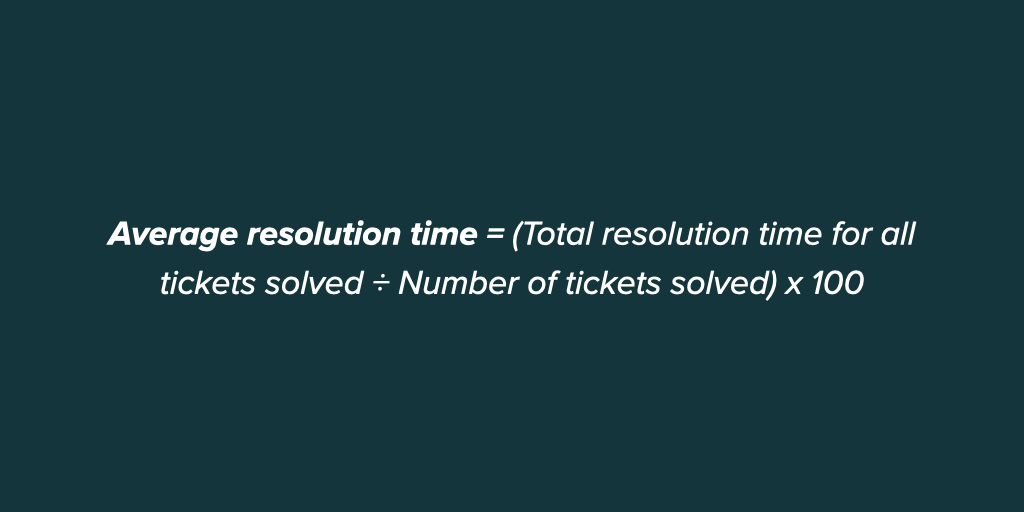Article • 14 min read
8 customer service standards to elevate your business
Customer service is a key differentiator in today’s competitive business landscape. Set customer service standards and regularly refine them to delight your audience and boost brand loyalty.
Peter Alig
Contributing Writer
When AT&T introduced the toll-free number in 1967, consumers rejoiced because they no longer had to call collect to speak to a company representative.
Let’s just say we’ve come a long way in customer communication since then. These days, 53 percent of consumers give up after 10 minutes of waiting for a live agent.
As service channels expand and evolve, customer expectations change along with them. To keep your audience satisfied and build brand loyalty, you need to set clear customer service standards that emphasise speed, thoroughness, and kindness.
What are customer service standards?
Customer service standards are benchmarks for customer satisfaction. Support teams measure a variety of performance KPIs – like first-response time and wrap-up time – to assess whether they’re providing high-quality experiences and meeting customer expectations.
It’s important to define these standards so your agents understand the level of customer service they need to deliver daily. Often, buyers base their expectations on stellar service provided by other companies – and it doesn’t matter if those businesses are competitors or not. When consumers experience excellent customer service, the bar is raised across the board. Your support team must meet those expectations and always be ready to adapt.
What are the benefits of customer service standards?
Great customer service isn’t just a nice-to-have – it enables companies to scale. In the Zendesk Customer Experience Trends Report 2022, 64 percent of business leaders said that good customer service had a positive impact on their organisation’s growth. Customer service standards empower your support team to offer the level of care and attention that drives company success.
Brand differentiation
Customer service plays a huge role in generating more business and revenue. 70 percent of say they’ve made purchase decisions based on the quality of customer service.
A set of clear standards helps support teams deliver customer service that differentiates their brand.
Say your support team values speed and aims for a first-contact resolution rate of 75 percent. That customer service standard pushes your team to adopt live chat. With this new channel, your team can answer potential customers’ questions more quickly and leave a positive impression – increasing the likelihood that they’ll do business with you over a competitor.Customer loyalty
Excellent support is also key to keeping customers: 60 percent of business owners say great customer service improves retention.
Nail down your customer service standards to improve customer retention.
Imagine your monthly churn rate increases by five percent, and you wonder if poor customer support is the culprit. Because you value consistency across your support channels, you send Net Promoter Score℠ (NPS®) surveys to repeat buyers. You learn many support emails go unanswered, so you hire an agent who focuses only on this channel. You notice higher NPS® scores two months later.Customer insights
Given the demise of third-party data and the ensuing lack of customer insights, 34 percent of marketers are frustrated. Customer service can be a valuable channel for making up lost ground.
With each interaction, you gather insights not just on how to improve your support but also on how well your products or services are meeting expectations.
Let’s say your agents receive an influx of calls about a product not working. You realise there’s a defect. You value complete transparency with your customers, so you proactively send them an email with an apology and the option to get a refund or a replacement. If a higher percentage of buyers choose a replacement, you gain a better understanding of how they feel about your brand.
How to structure your customer service department
Learn more about the key steps for structuring your customer service team with this free guide.
8 customer service quality standards for your business
Customer service guidelines and standards vary from team to team. It all depends on your company’s values and specific goals. That being said, most support teams use these customer service quality standards as benchmarks.
How to improve customer service standards
Due to the pandemic, 61 percent of consumers say they now have higher customer service standards. The pressure is on for support teams to rise to the occasion. Here are some tips for moving your performance metrics in the right direction and continuing to nurture customer relationships.
Due to the pandemic, 61% of consumers say they now have higher customer service standards.
Create a memorable on-hold experience
It’s no secret that customers hate long wait times. Some refuse to wait on hold for even one minute, so be sure to offer a callback service.
For everyone who does decide to wait on hold, they might be more forgiving if you add value to the experience. Don’t just thank them for waiting – consider offering them a promo code on their next purchase as a token of your gratitude. The gesture will not only make customers feel special but also turn the on-hold experience into a revenue-generating opportunity.
It helps to play the right hold music, too. If your brand is edgy or unconventional, don’t use annoying elevator music. Plenty of free and fee-based hold music options exist.
Send a CSAT survey to on-hold customers who end up speaking with agents. Compare these scores to those you calculated before you introduced your new on-hold experience.Train and assess agents regularly
To meet your customer service standards, agents need the right skills to excel in each of your target areas. Set up customer service training based on the benchmarks you’re hoping to meet.
Of course, training agents isn’t a straightforward process. If it were, 54 percent of consumers probably wouldn’t say it feels like customer service is an afterthought for most businesses. Your agents will need to balance training with handling customers, so it’s best to focus on one standard at a time.
Say you have three agents whose average resolution times lag behind those of their peers. These struggling agents might not be asking customers the right questions, so have them shadow agents who are excelling. Then, track their resolution times over the next month to see if they improve.Develop self-service resources
Offering customer self-service will free agents from routine inquiries, giving them more time to focus on complex customer issues. Plus, 89 percent of shoppers will spend more with companies that empower them to find answers independently. Clearly, self-service is a win-win and an effective way to raise your customer service standards.
When Stanley Black and Decker implemented self-service, they saw a 300 percent increase in agent efficiency. Their average CSAT score also jumped from 85 percent to 90 percent.
When developing your self-service materials, start with the most common requests and questions that can easily be addressed on an FAQ page, in a product guide, or by a chatbot. Explore different self-service content types and run tests to determine what’s most successful.Install an easy-to-navigate IVR menu
Busy call centers often struggle to meet customer service standards around speed. Interactive voice response systems (IVRs) can help.
IVR software automatically welcomes callers with a series of options that guides them toward a solution. Customers respond to prompts with their voice or phone touch screen.
An IVR can often resolve the customer’s issue without the help of an agent. In cases where it can’t, the system will route the caller to the appropriate agent, bypassing the hassle of multiple transfers.
While IVR systems can expedite support interactions, a faulty programme can create more work for the customer. They have to press numerous buttons to find the right agent – or worse, they never receive help from an agent. Gauge the efficacy of your IVR system by sending a survey to customers post-interaction.Invest in conversational customer service
Consumers expect high-quality support experiences across channels. But as the number of channels expands, it becomes more difficult to stay consistent and keep CSAT scores near the 80 percent target.
To meet and elevate their customer service standards, companies must prioritise conversational customer service: the ability to offer fast, personalised, uninterrupted support across web, mobile, and social apps.
In 2021, support inquiries over social messaging apps like WhatsApp, Facebook Messenger, and WeChat jumped 36 percent – higher than any other channel. If you neglect these popular support channels, you’ll see a negative impact on your bottom line. 93 percent of consumers will spend more with companies that offer their preferred customer service channel.
Conversational customer service enables consumers to use their preferred channel and allows agents to see the entire interaction history in a unified workspace. Instead of siloed conversations that start and stop every time a customer reaches out (or switches channels), each interaction becomes part of a larger conversation that carries over a lifetime of interactions with the company.
Say a customer opens a support ticket via live chat but needs to continue the conversation over the phone. With conversational customer service, the customer doesn’t need to repeat themselves to the agent who helps them on the phone. The agent already has all the context they need to resolve the issue quickly. You can send a CSAT survey at the end of both sessions to ensure the customer was satisfied with each interaction.
Over time, consider complementing your CSAT surveys with NPS® surveys to determine whether your conversational customer service strategy is boosting customer loyalty.
Reward agents who uphold high customer service standards
Once you’ve set expectations for your team, reward those who meet their goals, and develop improvement plans for those who don’t. Empowered agents will work harder to provide excellent customer service.
Use customer service software like Zendesk to track key metrics and ensure you’re delivering on customer expectations. It’s also important to regularly revisit your customer service quality standards and see where you can up your game. When you consistently delight your customers, they’ll reward you with their loyalty and their dollars.
Net Promoter, NPS, and the NPS-related emoticons are registered trademarks, and Net Promoter Score and Net Promoter System are service marks of Bain & Company, Inc., Satmetrix Systems, Inc., and Fred Reichheld.








